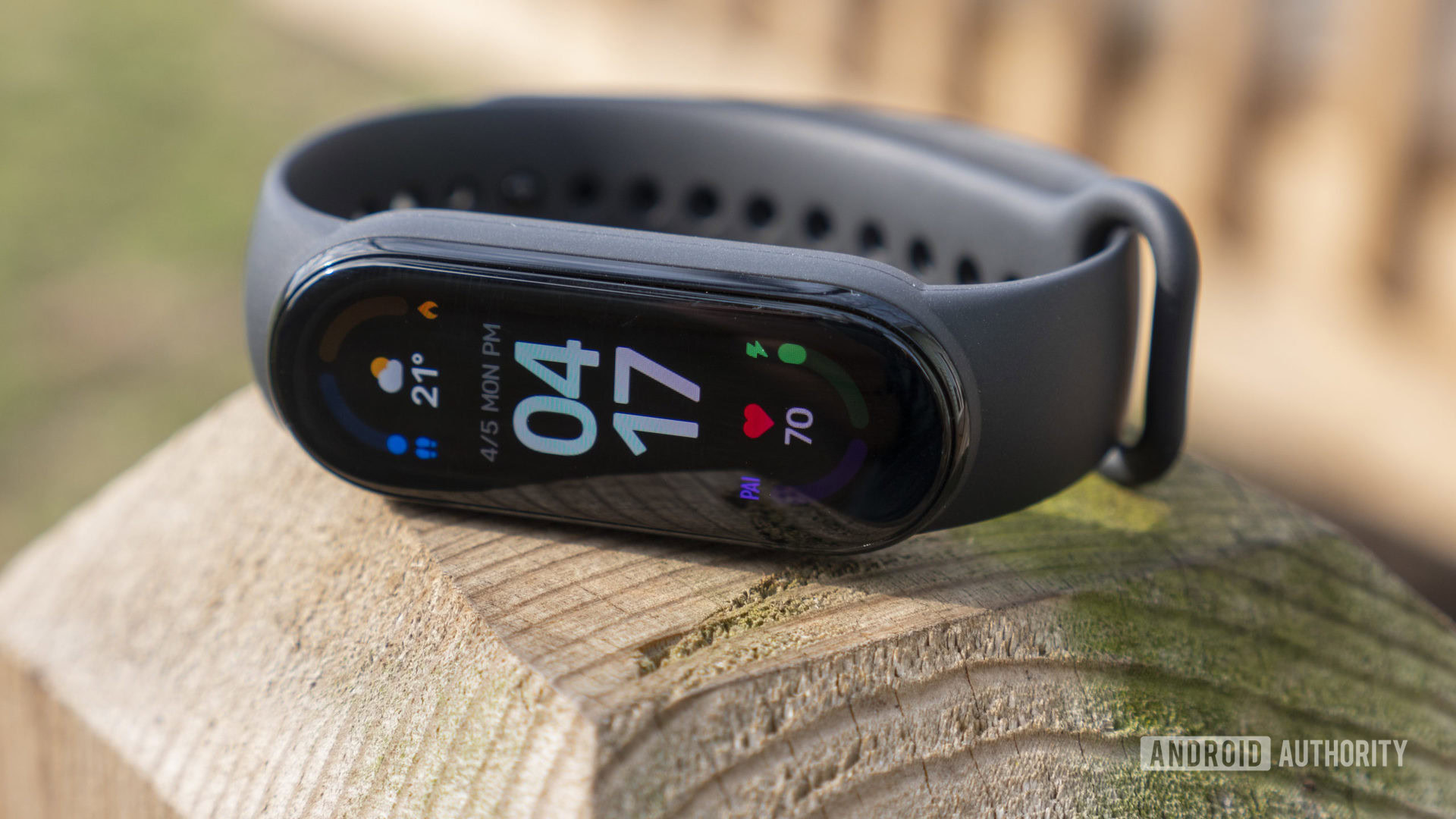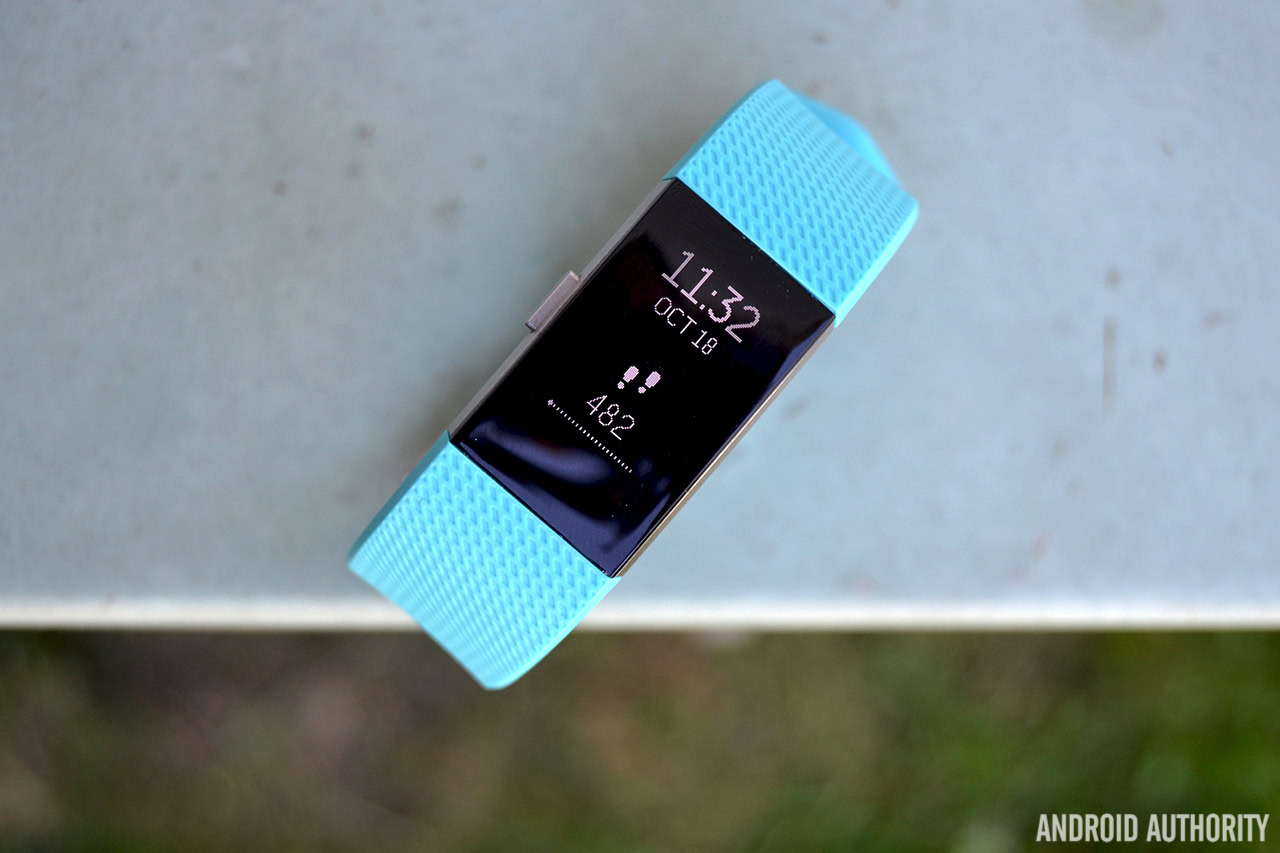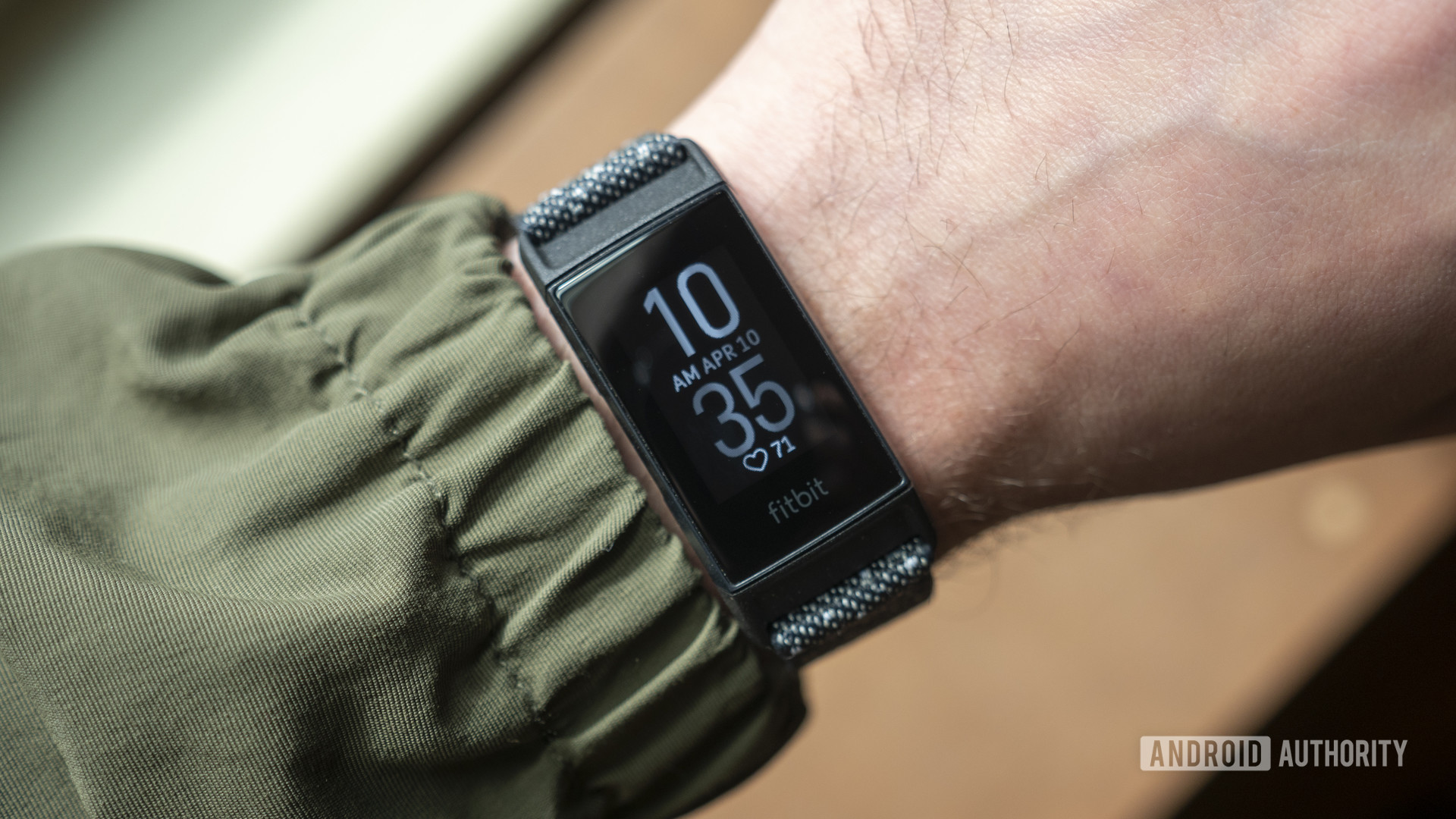How To Sync Fitbit Flex 2 To Iphone
If you're reading this, you're probably already aware that there aretons of different fitness trackers on the market that provide a wide range of tracking capabilities. There are plenty of high-end offerings, like the Garmin vívoactive HR and Polar M600, that are geared towards serious athletes. There are also a growing number of affordable, entry-level options for those who simply want to keep tabs on their daily activity levels.
The Fitbit Flex 2 is the latest upgrade to one of Fitbit's more entry-level fitness trackers. At first glance, it may appear to be little more than a fancy pedometer, but that would be a very unfair judgement of a device that actually has a fair few tricks up its sleeve, or, up your sleeve.
Join us as we learn the ins and outs of this device in our full Fitbit Flex 2 review!
Review notes: I've been using the Fitbit Flex 2 as my main fitness tracker for over two weeks. The Samsung Galaxy S6 Edge+ has been my smartphone companion of choice for the duration of this review.
The best fitness trackers (November 2021): Fitbit, Garmin, Xiaomi, and more
The Best

Design

First up, let's take a look at the design. This is a little hard to judge, seeing as the design can be pretty much whatever you'd like it to be.
That is to say that the main 'brains' of the unit can be removed and then inserted into a range of different bands and even pendants. The device itself is absolutely miniscule at 31.7 x 8.9 x 6.8mm and weighs in at just 0.83oz, letting it fit into a range of different accessories. In theory, this means that everyone should be able to find something that they like the looks of and that will fit their lifestyle.

You can very easily wear the Flex 2 under a shirt sleeve, and it doesn't get in the way while typing
In the box, you get two plain-ish rubber bands – one large and one small – with enough crossover in the middle for those with medium-sized wrists to happily wear either. The bands have some faint patterns on them and look stylish enough, but more importantly they are thin and light enough as to be completely unobtrusive. You can very easily wear these under a shirt sleeve, and it doesn't get in the way while typing or if you choose to wear a watch with it. This is a very important point for a fitness tracker – you need to be able to wear it all day without it becoming a hassle.
If you purchase your Flex 2 from Fitbit's website, you'll be able to choose from Black, Lavender, Magenta or Navy color options. Fitbit's accessory page also offers a handful of other colors, in addition to different styles of bangles and pendants. Amazon has a bunch of third-party bands, too, including different patterned bands, leather straps and even a clip for attaching the Flex 2 to your bra. And if you're really creative, it would even be easy enough to create your own band with a bit of 3D printing.

As you've probably noticed by now, there's no screen on this device like the one you'd find on the Fitbit Charge 2. What you do get, though, are five small LEDs on the top of the device. These can be used for very basic notifications (more on that below), or to show you how close you are to accomplishing your step goal. Double tap on the band and you'll be shown a corresponding number of lights to indicate your performance so far. For instance, if your step target is 10,000 and you've done 4,000 steps, two lights will show.
Fitbit Charge 2 review
Reviews

We do have a few criticisms on the design, though. For starters, attaching the band to your wrist is an absolute pain. As is the case with the Fitbit Alta, you're not going to be easily tightening and loosening the band on the Flex 2. The clasps are a little difficult to put on at first, but it becomes easier once you get the hang of it.

Also, the fact that the Flex 2 comes with a proprietary charging cable means that if you lose it, you're out of luck until you can purchase another one. Replacement chargers are available at Fitbit's website for $19.95, or you can grab a third-party charger from Amazon for around $10. We would have much rather preferred a standard microUSB or USB Type-C charging method, but we understand why that wouldn't have been possible due to the device's waterproof rating. Basically every other fitness tracker out there comes with a proprietary charging method, too, so this isn't really anything out of the ordinary.
Tapping the device to check our daily steps and dismiss alarms is also something we've struggled with. So much so, that we've often found ourselves wondering if it has actually run out of battery or is just being finicky. Maybe this is just Fitbit's clever way of getting us to burn a few more calories…
The most common Fitbit problems and how to fix them
How To

Features and performance

The Fitbit Flex 2 has no heart rate monitor or GPS, which means it isn't going to be a good choice for serious athletes. But that's clearly not who this is aimed at.
It works well as a step counter and seems to be pretty consistent with the results from our vívoactive HR (yesterday the Fitbit counted 13,407, compared to the vívoactive's 12,935). This information, along with some basic metrics such as height and weight, will then estimate your calorie burn for the day.

This is, of course, less accurate than using a fitness tracker with a heart rate monitor. We burned 5,767 calories according to the vívoactive on one particularly active day, but the Fitbit only counted 4,169 of them. It's also worth mentioning that, like most fitness tracking companies, Fitbit does not ask for your body fat percentage. Without that information, any attempt at calculating your metabolic rate is going to be inaccurate, thereby skewing the final numbers.
- Garmin vívoactive HR review
- Polar M600 review
The Flex 2 also handles basic sleep tracking and will automatically detect when you doze off. We haven't been overly impressed with this aspect however, as it often accuses us of having gone to sleep much earlier than we did or breaks our sleep up into small bits. When it does get it right, it's still a little lacklustre in terms of the information it presents. It'll only tell you you the number of times you woke up and the number of times you were restless, for instance.

Fitbit's autodetection technology is really, really good
What it does do remarkably well though, and what makes this much more than just a pedometer, is autodetection for activities. If you go for a run or a walk, the Flex 2 will automatically detect that activity and log it for you. Fitbit's autodetection technology works very well, and the algorithms it uses must be mind-boggling. Throughout our testing period, the Flex 2 has successfully autodetected walks, runs and even swims. I'm personally a pretty shoddy swimmer, so the latter was especially impressive. After 17 minutes of breaststroke at a local fitness center, I was able to review the number of lengths and the rough number of calories that would have burned. And yes, that means that the device is also waterproof.

This is actually a bigger deal than it seems, as the Flex 2 is Fitbit's very first water resistant fitness tracker. Garmin, Withings, Polar, and most other big-name fitness tracking companies have been making water resistant wearables for some time now, so it's nice to see Fitbit finally join the club.
Fitbit has finally made a water resistant fitness tracker
So we've already talked about automatic activity recognition, but exactly which activities can the Flex 2 track? With the Flex 2, you'll be able to track walking, running, cycling, elliptical training, sports, aerobic exercise and swimming, though unfortunately there's no option to log a weights workout. This means the Flex 2 likely won't appeal to gym rats, which is a shame with a name like "Flex". Other than that unfortunate omission though, we do believe that Fitbit is the best in the business when it comes to activity detection at the moment.
The Flex 2 will also remind you to move if you've been sitting for too long, which will definitely come in handy if you sit at a desk all day. This feature is par for the course in the fitness tracker world, but it is well implemented here.

While the Flex 2 doesn't have a display, it does offer a very basic form of notification support for calls and texts. The device will light up and vibrate when your phone receives an incoming call or text message, but that's it. Obviously there's no way to respond to or even dismiss the message from your wrist, which means you'll still have to pull out your phone for everything. After all, you'll feel your phone vibrate in your pocket anyway, which makes notification support on the Flex 2 is pretty meaningless. Still, it's there if you want it and easy enough to turn off if you don't.
There is support for a couple of alternative messaging services like WhatsApp, but you can only set notifications for one provider at a time. This means if you have your wristband set up to alert you to WhatsApp, you won't get SMS message alerts.
On a more positive note, the Flex 2, like most other Fitbit devices, supports silent alarms. While it may be a small feature, it is particularly useful if you need to wake up before your partner.

In terms of battery life, the Fitbit Flex 2 was able to last us roughly four days on a single charge. Fitbit says you can squeeze five days of battery out of this device, but we've found that to be particularly difficult, especially if you're working out every day. This isn't great news when you consider many other fitness trackerswith screens can last significantly longer. Then again, it makes more sense when factoring in the tiny size of the unit. What we do find irritating, though, is that you only get a small notification to warn you when your tracker is running low on charge. This little notification is pretty easy to miss, and it actually led to us failing to record quite an active day when the Flex 2 was actually out of battery. It would have been nice to have a flashing light or something that would perhaps give us a little more prior warning.
| Fitbit Flex 2 | |
|---|---|
| Display | LED display with five indicator lights |
| Heart rate monitor | No |
| GPS | No |
| Water resistant | Yes, up to 50 meters |
| Sleep tracking | Yes, automatic |
| Silent alarms | Yes |
| Notifications | Yes, calls and texts |
| Battery life | Up to 5 days |
| Sensors | 3-axis accelerometer Vibration motor |
| Compatibility | Windows, Mac, Android, iOS, Web |
| Interchangeable bands | Yes |
| Colors | Black, Lavender, Magenta, Navy |
| Dimensions | Small: 139.7mm - 170.2mm (11.2mm wide) Large: 170.2mm - 205.7mm (11.2mm wide) |
| Price | $99.95 |
Software

Fitbit has always had one of the best Android apps in the fitness tracking landscape, and that shines here with the Flex 2. The interface is clean, simple and intuitive, and is sure to delight casual and power users.

The app does come with a couple of caveats however, as one or two odd choices mar the experience. The biggest example for us is the fact that the swimming autodetection is off by default, so you'll need to turn it on by heading to Activities>Settings>Swimming>Auto-Recognize.
I wasn't aware the option was turned off by default, which meant the Flex 2 didn't record my first swim. That meant I had to go again, but to be fair, it certainly achieved the goal of keeping me active.

While there's no GPS built in, you can still track your routes by using the Fitbit app. This syncs with the footstep data coming from the band and thereby gives you a little more information, as well as plotting your route on a map. This isn't as good as having a built-in GPS, of course, as it means you have to take your phone with you on a run. It also won't give you as much detailed information as you'd get with a true running watch. It also won't record your stride length, VO2 max or anaerobic threshold, but the app should provide enough information to satisfy users who are new to tracking their running and workout stats.
While there's no GPS built in, you can still track your routes in the Fitbit app
Oh, and if you find that the Fitbit app isn't as robust as you'd like in some areas, you'll be happy to hear that you can pair your RunKeeper or Endomondo accounts with Fitbit's app. This means that whatever your Flex 2 records during your workouts, that information will be sent over to your favorite fitness tracking services.

This is also the case for tracking calorie burn. While Fitbit lets you sync with many popular services like MyFitnessPal, it also has the functionality built in, even allowing you to scan barcodes to automatically enter things you've eaten. Fitbit is one of the best brands when it comes to third party support.

The app will give you plenty of encouragement, too, with badges awarded for various milestones, weekly recaps and a strong social element. There are even challenges that pit you against other users.

Gallery
Conclusion

All in all, the Fitbit Flex 2 is a well-designed fitness tracker with a lot of neat features that serves as an introduction to Fitbit's excellent software and ecosystem. It's a small, convenient device that can take on any look to match your style and that will easily survive a dip in the pool. While it might lack advanced features, it is nevertheless smarter than you might expect thanks to the highly capable app and brilliant activity autodetection.
It's not perfect, though. Serious gym rats will be disappointed at the lack of tracking for strength workouts, battery life could be longer and the notifications are essentially pointless. It's also fairly expensive at $99.95 when you bear in mind that some fitness trackers will offer heart rate monitoring and other advanced features for not much more.
But if you like the svelte and versatile design and you're just looking for something that will reliably track your steps and activity, then you might not need those extra features anyway. And in that case, the Fitbit Flex 2 is probably one of the best basic trackers available.
How To Sync Fitbit Flex 2 To Iphone
Source: https://www.androidauthority.com/fitbit-flex-2-review-734265/
Posted by: foltzabsetiley.blogspot.com


0 Response to "How To Sync Fitbit Flex 2 To Iphone"
Post a Comment